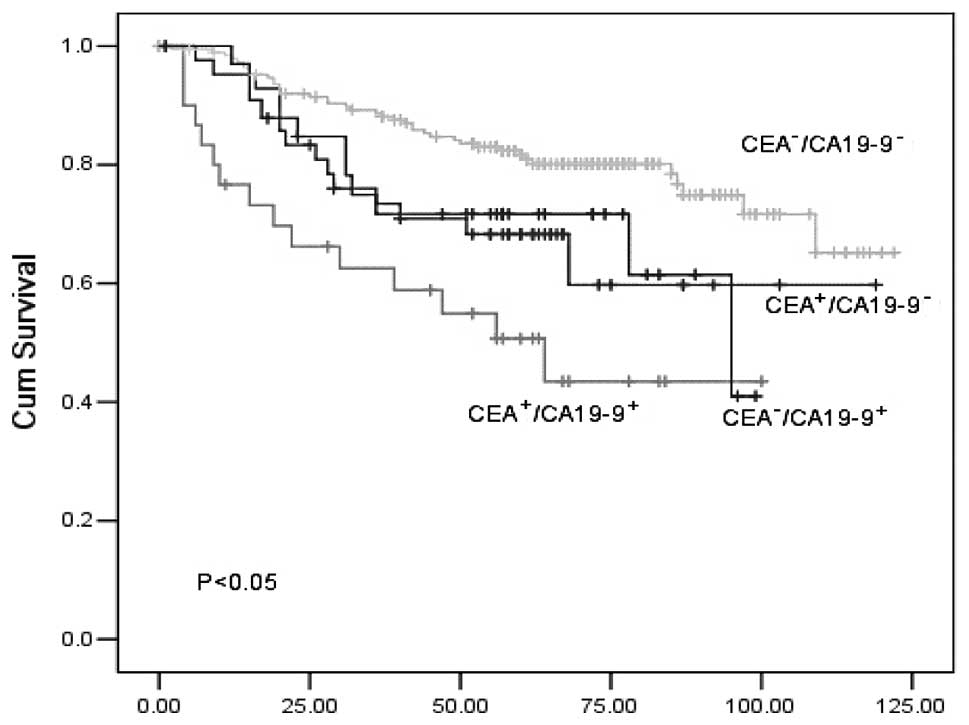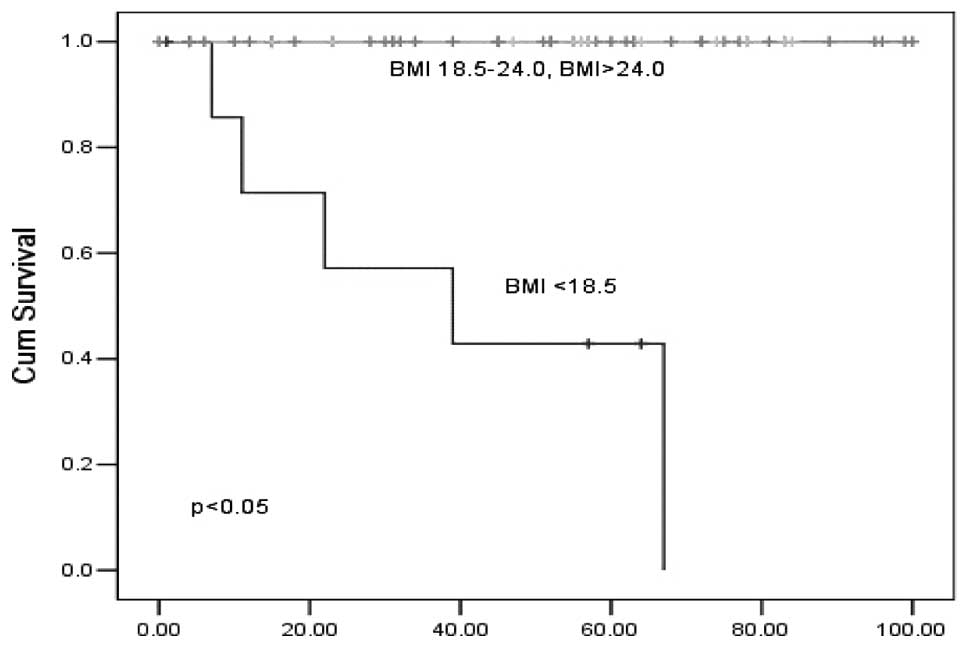Association between carcinoembryonic antigen, carbohydrate antigen 19‑9 and body mass index in colorectal cancer patients
- Authors:
- Published online on: July 23, 2013 https://doi.org/10.3892/mco.2013.158
- Pages: 879-886
Metrics:
Total
Views: 0 (Spandidos Publications: | PMC Statistics:
)
Total PDF Downloads: 0 (Spandidos Publications: | PMC Statistics:
)
Abstract
Carbohydrate antigen 19‑9 (CA19‑9) and carcinoembryonic antigen (CEA) have been well recognized as tumor markers for colorectal cancer. Previous studies suggested that obesity is inversely associated with the screening of CEA and CA19‑9 levels and may reduce screening sensitivity. This study was conducted to evaluate the association of body mass index (BMI) with serum CEA and CA19‑9 concentration in colorectal cancer patients. A total of 300 patients were enrolled in the study, selected from 2,950 consecutive colorectal cancer patients who underwent surgical treatment between August, 1994 and December, 2005. The association of BMI with CEA concentration, total circulating CEA mass and plasma volume was assessed by determining P‑values for trends. The multivariate linear regression analysis was used to adjust for clinicopathological confounding factors to analyze the main outcome measures when CEA and CA19‑9 had been log‑transformed. Increased BMI was linearly correlated with a higher plasma volume. Using the stepwise method, the multiple regression model including BMI categories was reconstructed as follows: loge[CEA]=0.208+0.241[liver metastasis]+0.051 [differentiation]+0.092[TNM]; loge[CA19‑9]=0.969+0.233 [gender]+0.141[ascites]+0.09[TNM]. The mean survival time in CEA+̸CA19‑9‑, CEA+̸CA19‑9+, CEA‑̸CA19‑9‑ and CEA‑̸CA19‑9+ patients was 84.8, 58.2, 100.6 and 74.7 months, respectively. The 1‑/3‑year survival rates in each group was 76.0/59.8, 66.2/43.5, 96.3/87.6 and 71.7/41.0, respectively. In conclusion, the decreased concentration of CEA and CA19‑9 in patients of higher BMIs may be the result of the hemodilution effect. The BMI factor should be considered during the surveillance of colorectal cancer. In addition, patients with simultaneous positive expression of CEA and CA19‑9 exhibited shorter survival time.













